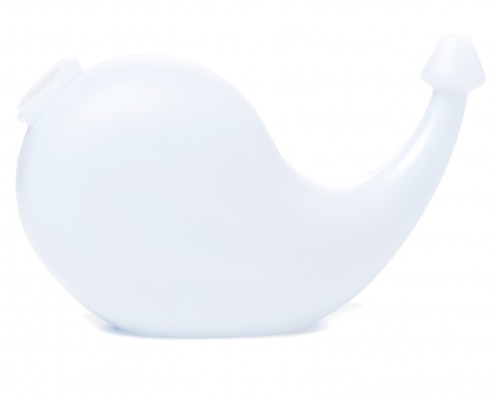The nasal lavage is a wonderful treatment used in cases of chronic infections and/or irritations in the nose and sinuses. These conditions include sinusitis, asthma, hay fever, and seasonal allergies.
The goal of the nasal lavage is to reduce or eliminate the recurrent irritant so that the body can be given a chance to heal itself. Often times antihistamines, antibiotics and/or surgery are used to treat these conditions but do little to affect them, especially their recurrence. Long-term use of nasal lavage in these cases, along with appropriate diet and lifestyle changes, can be extremely helpful.
For acute problems, perform the nasal wash up to four times per day until resolved. For chronic problems, it is usual to do the wash one or more times daily, continuing for several months. Pain or bleeding after the lavage may mean that an infection is still present and so it is important to continue with the program. Be persistent as it takes a lot of effort to rid your body of chronic bacteria that may be producing the low-grade infection. If your condition continues to worsen, or no improvement is noted after a week of treatment, see your doctor.
Supplies Needed:
- Sea salt
- Filtered or bottled water
- Neti pot or bulb syringe
- Towel or washcloth
Directions:
The technique, outlined below, may seem unusual at first. However, once learned, you will quickly realize how beneficial it is for sinus problems.
- Locate a workable container. The neti pot is specially designed with a spout that fits comfortably in one nostril. Alternatives you can use include a bulb syringe, a small flower watering pot, a turkey baster, or just a teacup (though the latter will be messier).
- Fill the container with lukewarm salt water. The salt-to-water ratio is 1 teaspoon sea salt to 1 pint (2 cups) water. Filtered or bottled water is best.
- Have some tissues within reach for this next part. Over a sink, tilt your head forward so that you are looking directly down toward the sink. Insert the spout into your right nostril. It is important that you breathe through your mouth. Turn your head to the right and let water move into the right nostril and exit the left nostril. Normally, you will feel the water as it passes through your sinuses. It is fine if some of the water drains into the mouth. Simply spit it out and adjust the tilt of your head.
- After using a cup of water, repeat the above procedure for the other nostril.
- To finish, expel any remaining water by quickly blowing air out both open nostrils 15 times over the sink. Avoid the temptation to block off one nostril, as doing so may force water into the eustachian tube.
Sinus Compress
This treatment can be used as a stand-alone treatment for painful, swollen sinuses, but can also be used in conjunction with the nasal lavage treatment. Combining the two seems to make each one work a little better.
Supplies Needed:
- Two face cloths
- Hot water
- Cold water
Directions:
- Soak one face cloth in hot water. Wring it out so it is damp but not dripping. Place the face cloth over your nose and eyes, and sinuses surrounding these areas and leave it in place for three minutes.
- Have the second face cloth soaking in cold water. Wring the cloth out. Remove the hot cloth, and place the cold cloth over the same area of your face for 30 seconds.
- Repeat this alternating sequence two more times for a total of three alternating sequences of three minutes hot and 30 seconds cold.
Frequency:
- For severe and acute problems, perform morning and evening.
- For less severe problems or maintenance, perform once a day.
The entire procedure will take about 10 minutes once you have everything organized. If you are trying to clear drainage from your sinus passages, perform the NASAL LAVAGE (above) procedure after you have completed the alternating hot and cold heating compresses.

